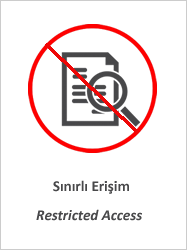Shaping Ability of Novel Nickel-Titanium Systems in Printed Primary Molars

Göster/
Erişim
info:eu-repo/semantics/closedAccessTarih
07.10.2022Yazar
Güçyetmez Topal, BurcuFalakaloğlu, Seda
Silva, Emmanuel João Nogueira Leal
Gündoğar, Mustafa
İriboz, Emre
Üst veri
Tüm öğe kaydını gösterKünye
Gucyetmez Topal, B., Falakaloglu, S., Silva, E. J. N. L., Gundogar, M., & Iriboz, E. (2004). Shaping Ability of Novel Nickel‐Titanium Systems in Printed Primary Molars. International Journal of Paediatric Dentistry.Özet
Background
Manual or mechanized instruments can be used for root canal preparation. Manual instrumentation using K-files is widely used in primary teeth, but there are many limitations. Mechanized root canal preparation can lead easy access to all canals, decrease instrumentation time, and more funnel shaped root canals, resulting in a more predictable uniform paste fill.
Aim
This study aimed to evaluate the shaping ability and instrumentation time of VDW.ROTATE™ and EdgeTaper Platinum™ during the preparation of resin-printed primary molars. Hand K-files was used as a reference for comparison.
Design
Sixty-six resin-based maxillary second primary molar, obtained from extracted tooth cone-beam computed tomography (CBCT) image and printed on a three-dimensional printer, were divided into three groups: VDW.ROTATE™, EdgeTaper Platinum™, K-files. The specimens were scanned using CBCT imaging before and after root canal preparation. Images were registered using a dedicated software and changes (Δ) in the canal area, volume, untouched canal surface were calculated. Instrumentation time was evaluated. Data were statistically analyzed using the SPSS program.
Results
There was no significant difference among the tested file systems for Δ canal volume and area (p> .05). However, VDW.ROTATE™ showed significantly lower untouched canal surface area than other systems in all roots (p < .001). The VDW.ROTATE™ was found to be significantly faster (6.47 ± 0.39 minutes) than EdgeTaper Platinum™ (7.71 ± 0.73 minutes) and K-files (8.22 ± 0.72 minutes), (p< .05).
Conclusions
The shaping ability and the instrumentation time was directly influenced by the root canal instrumentation system used during the preparation of resin-printed primary molars, with VDW.ROTATE™ being the faster system and associated with the lower amount of untouched canal surface area.















